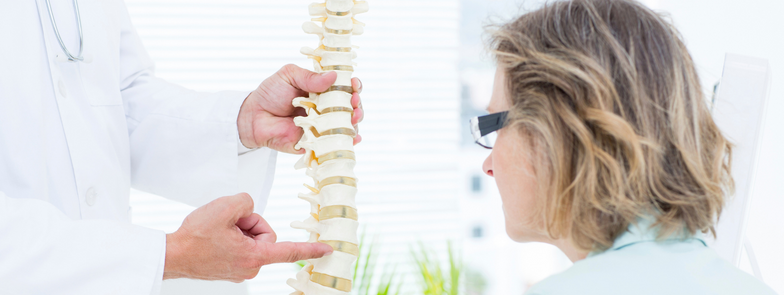How to look after your spine health
This World Spine Day (16th October) we’re focusing on habits you can form to help maintain a healthy spine.
About the spine
Your spine gives your body structure and support as well as allowing you to move about freely and with flexibility. It also protects your spinal cord, a column of nerves that connects your brain to the rest of your body and allows you to control your movements. The spine is made up of 24 vertebrae, which are separated by discs. These discs help keep the vertebrae together, as well as acting as shock absorbers for your body when you move.
Problems with the spine
Spinal disorders, such as back pain, neck pain, scoliosis and disc disease, are common. In fact, up to 60% of the adult population can expect to have low back pain at some point in their life.* In addition, research has demonstrated that poor posture and inactivity can contribute to the development of back pain, neck pain and other spinal disorders.**
Healthy life = healthy spine
It goes without saying that, in addition to any pain experienced, problems with the spine can have a profound effect on a person’s overall health, affecting their ability to work and enjoy everyday activities. As such, this World Spine Day, we’re focusing on positive steps you can take each day and each week to help maintain a healthy spine.
1. Get a good night’s sleep
It’s really important to try to get a good night’s sleep, so aim to get 7.5-8.5 hours per night on a regular basis. This is because regular poor sleep can have an impact on you physically and mentally. It can affect your ability to think, handle stress and even how you experience pain. For information on the benefits of a good night’s sleep and how to get one, see https://bristolbackpain.com/blog/2021/07/13/reasons-to-get-a-good-nights-sleep/
2. Drink more water
Water is extremely important when it comes to spinal health. This is because the spine requires ample water to maintain and repair healthy tissue, keep joints lubricated and effectively absorb shock / help reduce stress on your body. As such, you should try to drink 6 – 8 glasses of water per day. For tips on how to increase your water intake, check out our blog on how to keep hydrated.
3. Move every 30 minutes
Sitting in one position for longer than 30 minutes can cause problems in your lower back. Avoid this by changing positions and stretching frequently. And if you’re worried you might forget or get distracted, set an alarm every half hour as a reminder to get up and get moving.
4. Do weight-bearing exercise
Weight-bearing exercise is a great way to improve bone density and strengthen your muscles, ligaments and joints. Weight bearing exercise is any activity where your legs and feet support your weight. This could be high impact activity such as running, skipping, dancing, aerobics and HIIT work outs, or low impact activities like brisk walking, keep-fit classes or a game of tennis.
5. Walk more
A lack of physical activity can cause the muscles and joints in your lower back and hips to become stiff, increasing pressure on your spine. Combat this by getting out for a daily walk. Walking has multiple health benefits. These include improving cardiovascular fitness, strengthening your bones, helping you maintain a healthy weight and increasing your energy levels. It also helps strengthen the muscles that support your spine, as well as increasing flexibility in your lower back. So look after your spine by aiming for 10,000 steps a day. For more information on the health benefits of walking, and tips on how to build more steps into your day, see https://www.nhs.uk/live-well/exercise/running-and-aerobic-exercises/walking-for-health/
6. Stretch
Another way to help support your spine and your posture, and to reduce pain, is to stretch. The British Chiropractic Association has put together a three minute spinal health programme of stretches designed to promote balance, strength and flexibility in the spine. It’s called Straighten Up Uk, so check it out and give it a go.
**http://www.who.int/medicines/areas/priority_medicines/BP6_24LBP.pdf

